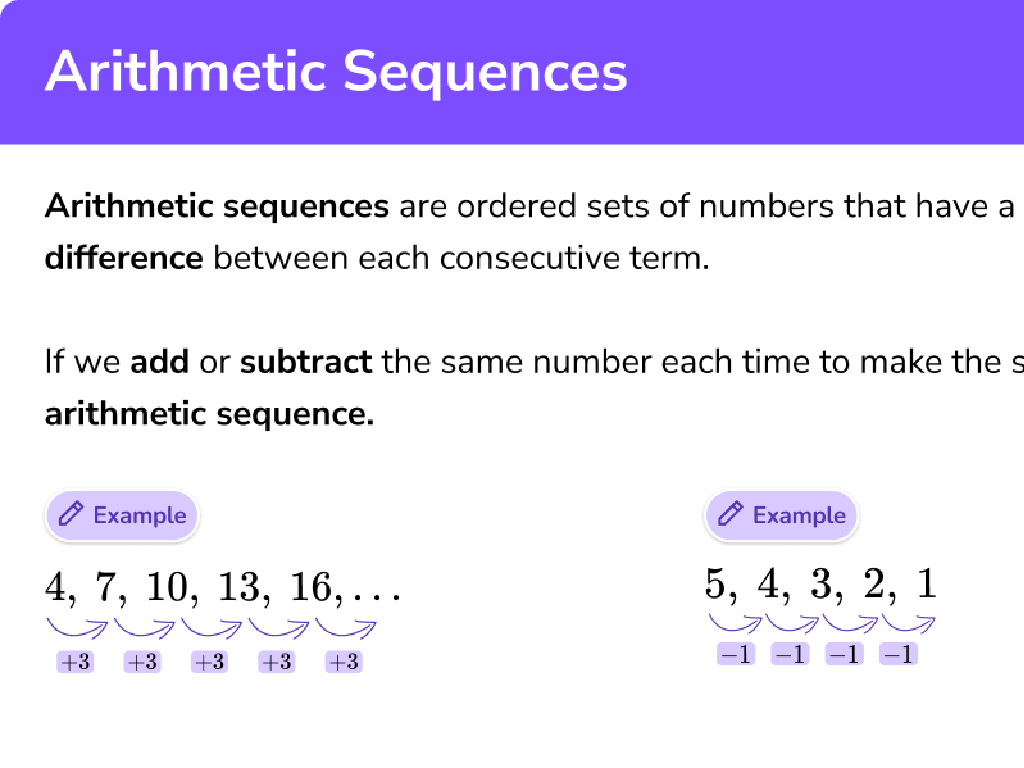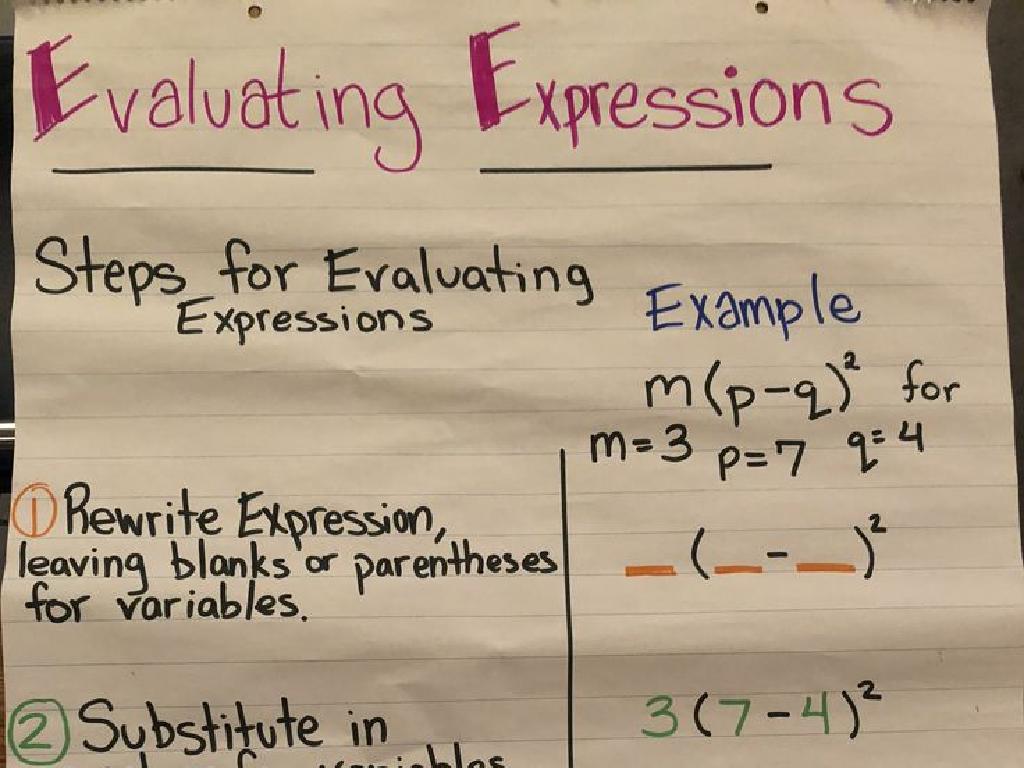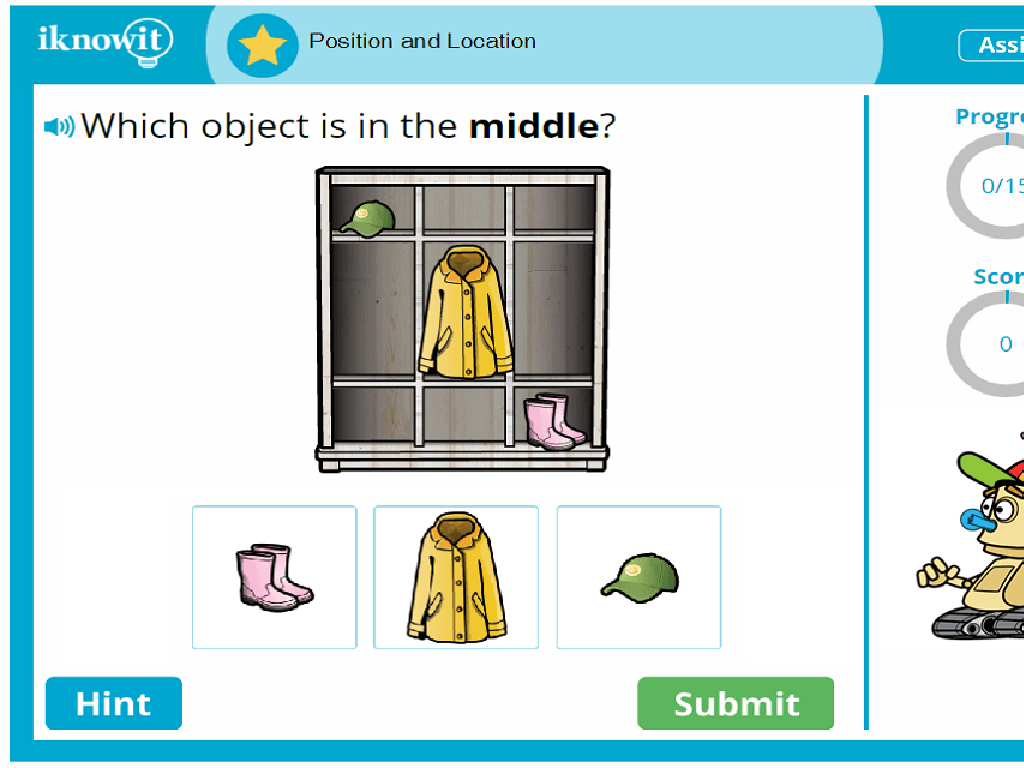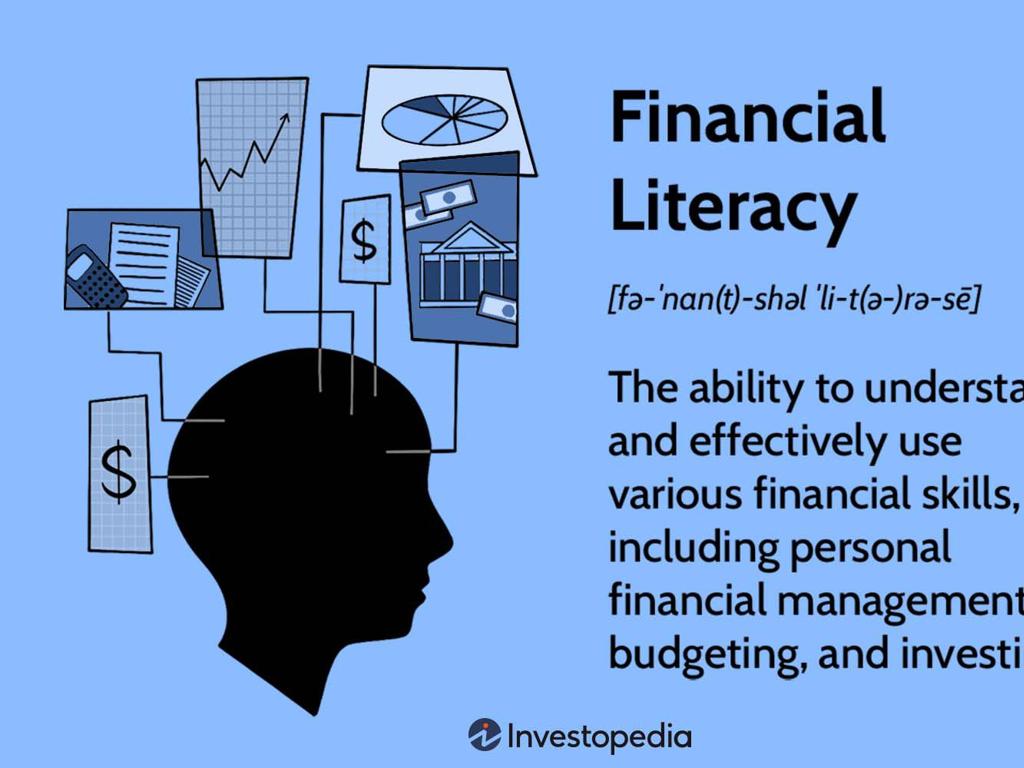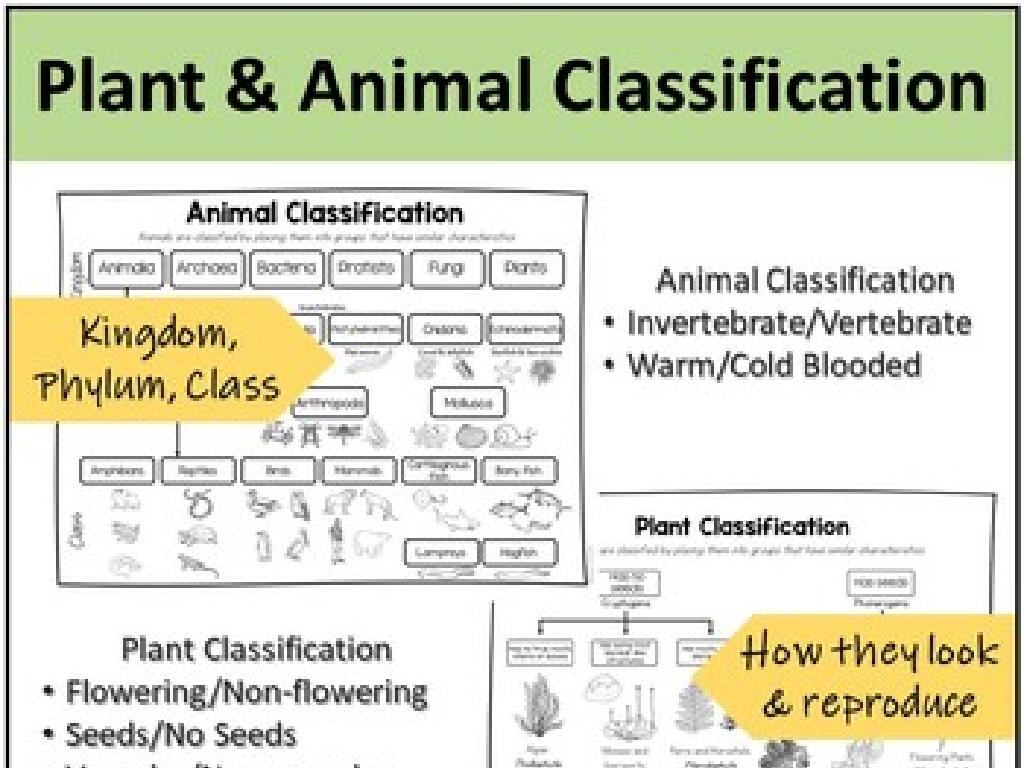Compare Products Of Whole Numbers
Subject: Math
Grade: Fifth grade
Topic: Multiplication
Please LOG IN to download the presentation. Access is available to registered users only.
View More Content
Today’s Adventure: Comparing Products
– Multiplication: groups of objects
– Think of multiplication as adding equal groups, like 3 groups of 4 apples.
– Comparing products: what’s larger?
– Which is more: 4 groups of 3 or 3 groups of 5? Let’s find out!
– Practical uses of product comparison
– Comparing products helps in budgeting, shopping, and more.
– Engage with real-life examples
|
This slide introduces the concept of multiplication as a method for combining equal groups and sets the stage for understanding how to compare the results, or products, of different multiplication problems. Emphasize that multiplication is not just a math operation but a tool for organizing and comparing quantities, which is a skill used in everyday scenarios such as shopping or planning events. Provide examples where students might need to compare quantities, like determining the best buy in a grocery store or comparing distances in a race. Encourage students to think of their own examples where they compare amounts to make decisions.
Quick Review: Multiplication Facts
– Multiplication as repeated addition
– Multiplication combines equal groups
– Practice example: 5 times 3
– 5 times 3 means 5 added together 3 times, which equals 15
– Understanding product comparison
– Comparing products helps us understand which number combinations give larger or smaller results
|
This slide is a quick review of multiplication facts to help students recall the concept of multiplication as repeated addition. Start by explaining that multiplication is a way to add the same number several times quickly. Use the practice example to illustrate this: 5 times 3 means adding the number 5 together three times (5 + 5 + 5), which equals 15. Emphasize that understanding how to compare products of whole numbers is crucial in many real-life situations, such as determining which pack of items offers more quantity or comparing areas of different shapes. Encourage students to think of multiplication as a faster way to add and to use this knowledge to compare the size of products.
Understanding Products in Multiplication
– Define the term ‘Product’
– Product results from multiplication
– When we multiply, the answer we get is called the product
– Example: 4 multiplied by 6
– 4 x 6 equals 24, so 24 is the product
– Practice finding products
– Use different number pairs to calculate more products
|
This slide introduces the concept of products in multiplication. Begin by defining the term ‘product’ as the result of multiplying two numbers together. Emphasize that the product is the answer we get after multiplication. Provide a clear example, such as 4 multiplied by 6 equals 24, to illustrate the concept. Encourage students to practice finding products by multiplying different pairs of whole numbers. This will help solidify their understanding of multiplication as they compare the size of products obtained from different number pairs. Make sure to provide a variety of examples and to check for understanding by asking students to explain the process in their own words.
Comparing Products of Whole Numbers
– How to compare two products
– Understanding comparison symbols
– Symbols: > (greater), 54
– Practice comparing products
– Use multiplication to solve and compare
|
This slide introduces students to the concept of comparing the products of whole numbers using comparison symbols. Start by explaining that comparing products is similar to comparing single numbers, but we first need to find the products. Introduce the symbols for greater than, less than, and equal to. Work through the example provided by calculating the products of 7 and 8, and 6 and 9, then comparing the results using the appropriate symbol. Encourage students to practice with additional examples, ensuring they understand how to multiply to find the products before comparing them. This will help solidify their understanding of both multiplication and comparison of numbers.
Let’s Practice Comparing Products!
– Compare 4 x 5 with 3 x 7
– Is 20 greater than or less than 21?
– Which is greater: 6 x 6 or 5 x 8?
– Is 36 greater than 40 or not?
– Discuss your reasoning
– Talk with a classmate about your answers
– Share your answers
– Be ready to explain how you decided
|
This slide is a class activity designed to engage students in comparing the products of whole numbers. For the first problem, students will calculate the products of 4 x 5 and 3 x 7 and then determine which product is larger. The second problem asks students to compare 6 x 6 with 5 x 8. Encourage students to discuss their thought process with a neighbor to reinforce their understanding of multiplication and comparison. This activity will help students practice their multiplication skills and develop their reasoning abilities. As a teacher, walk around the classroom to listen to discussions and provide guidance if needed. Be prepared to discuss different strategies students might use, such as using known multiplication facts or estimating to compare numbers quickly.
Using Comparison in Real Life
– Importance of comparing products
– Bulk vs. Individual item purchase
– Compare cost of a single can of soda vs. a pack of 12
– Saving money through comparison
– Find the best deal by calculating cost per item
– Practical application of multiplication
– Use multiplication to determine total costs and compare
|
Understanding how to compare products using multiplication is a valuable life skill that can lead to smarter purchasing decisions and savings. For example, students can compare the total cost of buying individual cans of soda versus a 12-pack. By calculating the price per can in each scenario, they can determine which is the better deal. This exercise not only reinforces multiplication skills but also introduces concepts of unit price and budgeting. Encourage students to bring in examples from grocery flyers or to discuss items they or their families buy regularly.
Class Activity: Product Comparison Challenge
– List products of two number sets
– Compare and rank products
– Determine which product is smaller or larger
– Present findings to the class
– Collaborate and learn
– Work together to understand multiplication
|
This activity is designed to reinforce the concept of multiplication by comparing the products of whole numbers. Divide the class into small groups and provide each group with two sets of numbers to multiply. Once they have calculated the products, students will compare the results and arrange them in ascending order. Each group will then present their ranked list to the class, explaining how they determined the order. Encourage collaboration and ensure that each student participates in the process. Possible variations of the activity could include using different number sets, incorporating word problems, or challenging students to find the products of more than two numbers.
Conclusion & Reflection: Comparing Products
– Review of product comparison
– Applying knowledge daily
– Use comparisons when shopping or cooking
– Homework: Real-world comparison
– Find items to compare prices and quantities
– Reflect on today’s learning
|
Today, we’ve learned how to compare the products of whole numbers, which is a valuable skill in mathematics that can be applied in various real-life situations. Students can use this knowledge when shopping to determine the best deals or when cooking to adjust recipes. For homework, students should find items at home or in a store and compare their products, such as the total cost of different quantities of goods or comparing areas of different rooms at home. Encourage them to reflect on how this skill can help them make better decisions and to share their experiences in the next class.

